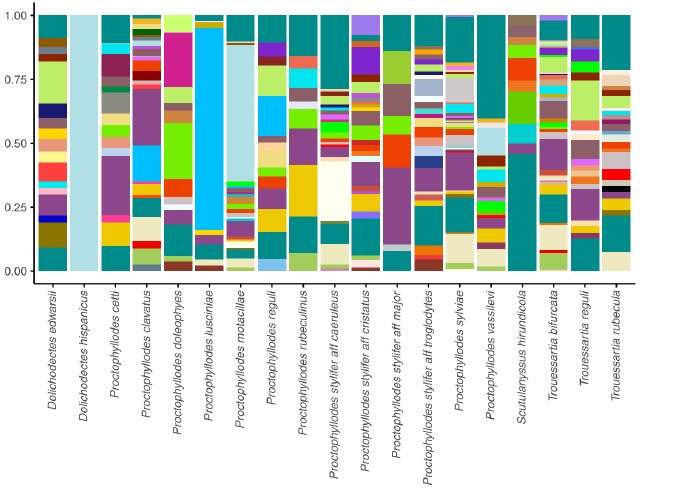Feather mites play a role in cleaning host feathers: New insights from DNA metabarcoding and microscopy

Feather mites play a role in cleaning host feathers: New insights from DNA metabarcoding and microscopy
Abstract
Parasites and other symbionts are crucial components of ecosystems, regulating host populations and supporting food webs. However, most symbiont systems, especially those involving commensals and mutualists, are relatively poorly understood. In this study, we have investigated the nature of the symbiotic relationship between birds and their most abundant and diverse ectosymbionts: the vane‐dwelling feather mites. For this purpose, we studied the diet of feather mites using two complementary methods. First, we used light microscopy to examine the gut contents of 1,300 individual feather mites representing 100 mite genera (18 families) from 190 bird species belonging to 72 families and 19 orders. Second, we used high‐throughput sequencing (HTS) and DNA metabarcoding to determine gut contents from 1,833 individual mites of 18 species inhabiting 18 bird species. Results showed fungi and potentially bacteria as the main food resources for feather mites (apart from potential bird uropygial gland oil). Diatoms and plant matter appeared as rare food resources for feather mites. Importantly, we did not find any evidence of feather mites feeding upon bird resources (e.g., blood, skin) other than potentially uropygial gland oil. In addition, we found a high prevalence of both keratinophilic and pathogenic fungal taxa in the feather mite species examined. Altogether, our results shed light on the long‐standing question of the nature of the relationship between birds and their vane‐dwelling feather mites, supporting previous evidence for a commensalistic–mutualistic role of feather mites, which are revealed as likely fungivore–microbivore–detritivore symbionts of bird feathers.